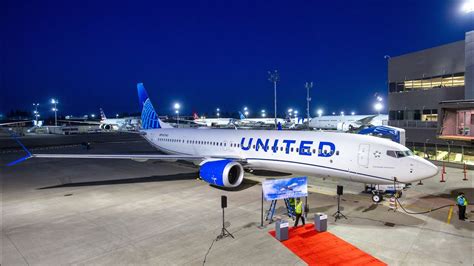On May 6th, 2019 the FAA put out a circular that seems to have attracted little attention. It was about weight & balance. The kicker here is “information on the use of average estimated weight programs for passengers and baggage” – this is the other side of the story to that feeling coach seats are getting smaller. Seats are not getting smaller (legroom is tighter), it’s people who are getting bigger.
Since these are FAA rules, it’s American travelers that get squeezed. Thirty percent of adults 20 years of age and older (over 60 million people) are obese, according to the National Center for Health Statistics. If you don’t think you’re going to like what’s coming, you best skip the rest of this story now.
The new FAA rules are going to make American air travelers very unhappy. VERY UNHAPPY.
US airlines are going to update “standard average passenger weights” and these weights increase in winter. Airlines are being told they need to undertake surveys to establish weights for crew, bags, and passengers. The language in the document linked (download it here) above has guidance on surveying people – random sampling, and even elective passenger participation.
Under Elective Passenger Participation, we have this guidance: “Regardless of the sampling method used, an operator has the option of surveying each passenger and bag aboard the aircraft and should give a passenger the right to decline to participate in any passenger or bag weight survey. If a passenger declines to participate, the operator should select the next passenger based on the operator’s random selection method rather than select the next passenger in a line. If a passenger declines to participate, an operator should not attempt to estimate data for inclusion in the survey.”
This being the United States, we get the following further guidance: “An operator that chooses to weigh passengers as part of a survey should take care to protect the privacy of passengers. The scale readout should remain hidden from public view. An operator should ensure that any passenger weight data collected remains confidential.”
It gets a little more delicate as you read further.
There 58 pages of this to wade through.
Cutting to the chase, what could all this mean?
Airlines are in the business of making money from payloads. To date, payloads have been fudged and averaged. Even if people have grown larger/heavier, passengers have managed to squeeze into seats and put up with growing discomfort. Airlines made lots of money. But payloads are going to be more defined, down to a personal level. The weight issue is going out of balance, to twist the meaning of W&B. We have something coming that has not been seen before. The past averages are too imprecise for the FAA and they want tighter W&B numbers.
The new FAA standards will increase an average adult passenger and carry-on bag weight to 190 pounds in the summer and 195 pounds in the winter. Up 12% from 170 pounds and 175 pounds, respectively. This includes an extra ten pounds for winter and five pounds for summer. This also includes 16 pounds for personal items, up from ten. Airlines must increase the average weight of female passengers and their carry-ons from 145 pounds to 179 pounds in summer, and from 150 pounds to 184 pounds in winter. The average weight for males with carry-ons is increased from 185 pounds in summer to 200 pounds, and from 190 pounds to 205 pounds in winter.
Most of an aircraft’s weight is fuel. But that does not matter because that weight is essentially a given. Passenger weight on the other hand is variable.
Impacting Airlines
Airlines must recalculate their W&B. The current seating levels will, probably, have to be eased. Those 737s at 172 seats may not be around for long. The reason for this is because heavier passengers will lead to fewer seats being filled and if they cannot be sold, airlines may as well remove that non-paying empty seat weight. You can be certain that fares are going to pop. And pop a lot. There is no point in airlines having seats they cannot sell. But those they can sell and charge for, and you can be sure they will do just that.
Take a 180-seater aircraft. Assuming all 180 seats are occupied by males, the new weights mean the aircraft will see its weight increase by 3,600 pounds. That is the equivalent of 19 passengers at the new weights. If the airline operating that aircraft has to remove 19 seats from inventory, that means 11% less revenue. In 2019 on average US airlines saw a net income of $3,658 per departure with an average fare at $407.07. There’s not much margin and an 11% revenue hit will likely make many flights unprofitable.
That holiday trip where you planned to eat and drink to your heart’s delight has suddenly changed. How much will you weigh in at the gate? What can or will the airline charge you if you’re over the weight the FAA set?
The impact on the US airline industry is going to be significant and unpleasant. After having been irritated by airport parking, the check-in line (and bag fees), then the TSA security line, passengers are set to, potentially, face another humiliation at the gate. If we have seen a spike in passengers misbehaving in-flight already, this new world is going to be real fun. Will cabin crew need body armor?
Views: 1180






You’ve misrepresented the new rules. Yes, the average weights have increased for the reasons you’ve stated, but the process and options of determining passenger weight have not changed. Go back and look at the rules that were replaced by this new rule and you’ll see the same options for determining passenger weight in those older rules.
The previous comment is correct. This article’s conclusions are misleading and clickbaity. Airlines aren’t going to start weighing passengers on each flight. The weighing of passengers is done to establish up-to-date averages, which airlines will use when doing weight and balance computations because out-of-balance aircraft are dangerous. Passengers will not notice any difference, with the possible exception of extra baggage limits on certain routes during certain times of year. The more important difference will just be in terms of where, not how much, baggage is loaded in order to keep the aircraft’s center of gravity within the proper bounds.
The only air carriers that actually weigh individual passengers on each flight will continue to be the ones operating extremely small aircraft (e.g. helicopters and aircraft with seating for around 10 or fewer passengers.) This has always been the case for such carriers. No extra charges for overweight passengers will happen, as long as they fit within a standard seat, same as has always been the case.
We just blocked off 6 seats on a 757-300 due to this ruling these seats are still on aircraft and will not be used, this was done via an Engineering Order, doubt the seat will remain not sure of long term plans.
I’m glad to see the FAA is finally taking action to update weight and balance rules. These rules are important for safety and should be updated regularly to reflect changes in aircraft technology.